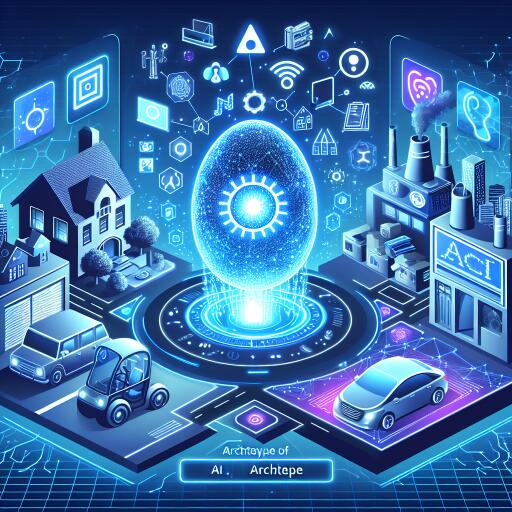Revolutionizing Interactions with Physical World: The Dawn of Conversational Cars, Homes, and Factories
In a world increasingly interwoven with technology, a groundbreaking startup named Archetype AI is set to redefine our interaction with the physical environment. Imagine engaging in a dialogue with your house, car, or even the factory floor, much like how you would converse with a chatbot online. This futuristic vision is rapidly approaching reality thanks to Archetype’s innovative approach, which leverages the power of real-time data collected from billions of sensors around the globe.
At the core of Archetype’s technology is an advanced model dubbed Newton. Far from a mere traditional chatbot, Newton is engineered to not only generate programmed responses but also interpret a myriad of data streaming from various sensors. This data interpretation allows for the presentation of insights, charts, and even computer code correlating to tangible events in the real world. Ivan Poupyrev, the CEO and co-founder of Archetype, characterizes Newton as the “ChatGPT for physical reality.” With an illustrious career stretching from the Soviet Union to stints at tech giants like Sony, Disney, and Google, Poupyrev conceived Archetype inspired by the ambitious goal of technologically harmonizing with the physical world. This vision has attracted a robust $13 million seed investment to fuel the startup’s journey.
Brandon Barbello, the COO of Archetype, sheds light on the AI’s pivotal role in decoding the complexity of sensor data. Newton’s prowess lies in facilitating plain language interactions, thus simplifying the monitoring and problem-solving processes across varied domains, from residential settings to industrial landscapes.
Archetype’s transformative potential has garnered interest from corporate behemoths such as Amazon and Volkswagen. Amazon is exploring avenues to optimize logistics operations through Newton’s insights, while Volkswagen seeks to enrich both the driving and non-driving facets of automotive experience with AI’s touch. Similarly, Stefano Bini, a professor at UC San Francisco, envisions employing Newton to pioneer advancements in healthcare interventions.
However, this technological leap is not without its ethical concerns, primarily surrounding privacy and surveillance. In response, Poupyrev and Barbello underscore their commitment to tackling specific problems with a clear focus on privacy respectfulness. The challenges notwithstanding, the innovations brought forth by Archetype promise a reimagined interaction layer between humans and the material world, igniting discussions on the ethical ramifications of intertwining AI with real-world data.
The pioneering efforts of Archetype AI could indeed pave the way for an era where conversing with the non-living elements of our daily lives becomes second nature, transforming our interactions with the physical world. As we stand on the brink of this technological revolution, it becomes imperative to navigate the fine line between unprecedented convenience and the safeguarding of our private lives. The journey of Archetype AI is a testament to the transformative potential of fusing AI with the physical realm, marking a significant milestone in our quest to harmonize technology with the tangible aspects of our existence.










